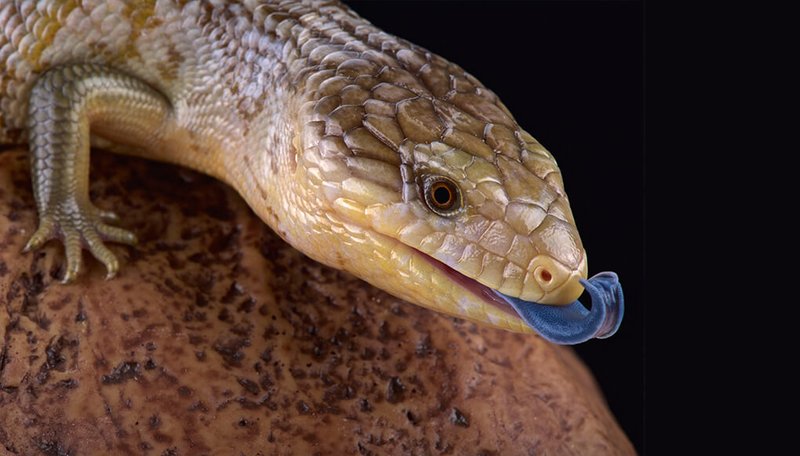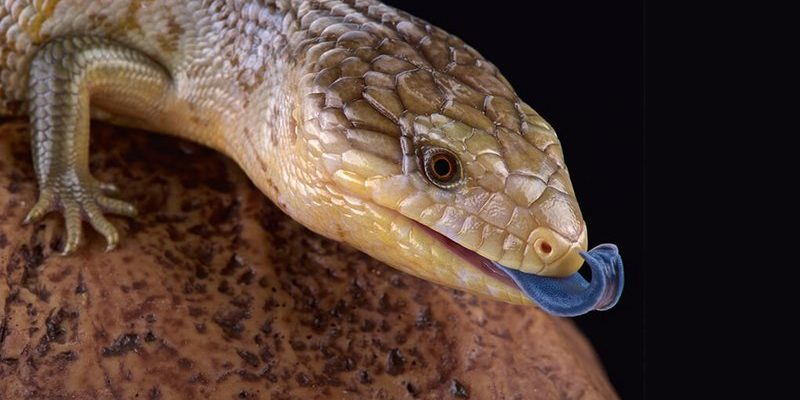
Blue-tongue skinks are found in various environments, from woodlands to grasslands, primarily in Australia and New Guinea. They thrive in warmth and can often be spotted basking in the sun. Unfortunately, like many species, they face challenges that could threaten their populations. Understanding whether they are endangered is a step toward recognizing what we can do to help them survive.
What Are Blue-Tongue Skinks?
Blue-tongue skinks belong to the family Scincidae, and they’re known for their distinctively shaped bodies and striking coloration. These reptiles can grow to around 18 to 24 inches long, making them one of the larger skink species. What’s fascinating is their adaptability; they can live in a variety of habitats, from arid regions to rainforests.
These lizards are omnivorous, munching on plants, insects, and even small animals. They have a peculiar defense mechanism—when threatened, they open their mouths wide and display their vibrant blue tongues. This startling display can confuse predators, giving the skink a chance to escape.
It’s worth noting that there are several species of blue-tongue skinks. The most well-known include the Eastern blue-tongued skink and the Southern blue-tongued skink. Each has its own unique characteristics and behaviors, but all share that charming blue tongue.
Are Blue-Tongue Skinks Endangered?
So, are blue-tongue skinks considered endangered? The quick answer is: it depends on the species. The Eastern blue-tongued skink, for instance, is listed as “least concern” by the International Union for Conservation of Nature (IUCN), which means they’re currently not at immediate risk of extinction. However, this doesn’t mean they’re entirely safe.
Habitat destruction is one of the significant threats these lizards face. Urbanization and agriculture can wipe out their natural homes, leaving them vulnerable. While some species have adapted well to urban environments, others struggle to survive as their habitats shrink.
You might be wondering what could change this status. Conservation efforts play a crucial role in monitoring their populations and habitats. Programs aimed at protecting natural environments help ensure that these skinks continue to thrive.
Threats to Blue-Tongue Skinks
Blue-tongue skinks face various threats that can impact their populations. Let’s dive into a few key issues:
- Habitat Loss: As cities expand and agriculture grows, many natural habitats are destroyed or altered. This limits the space these lizards have to live and thrive.
- Climate Change: Shifts in temperature and weather patterns affect their habitats. Blue-tongue skinks are cold-blooded, meaning their body temperature relies on the environment. Unpredictable weather can hinder their ability to regulate temperatures.
- Road Mortality: As they venture out to bask or search for food, many blue-tongue skinks fall victim to traffic. Road mortality is a significant risk, especially in areas with heavy vehicle use.
These threats don’t just affect skinks; they play a role in the overall health of the ecosystems they inhabit. When a species struggles, it can have a ripple effect on other creatures that share its habitat.
Conservation Efforts for Blue-Tongue Skinks
Conservation efforts are vital to ensure the future of blue-tongue skinks and their habitats. Organizations, governments, and local communities are working together to improve the situation for these creatures. Here’s how:
- Habitat Protection: Establishing protected areas helps preserve natural habitats where blue-tongue skinks can thrive. This is crucial for keeping their populations stable.
- Education and Awareness: Teaching people about the importance of blue-tongue skinks helps foster appreciation and support for conservation efforts. Engaging the community can lead to positive changes in behavior toward wildlife.
- Research and Monitoring: Ongoing studies help scientists understand the population dynamics of blue-tongue skinks. Monitoring their numbers can provide crucial data to inform conservation strategies.
These efforts not only benefit blue-tongue skinks but also contribute to broader environmental conservation goals. Protecting a single species often equates to preserving the entire ecosystem.
How You Can Help Blue-Tongue Skinks
Feeling inspired to help out? There are plenty of ways you can contribute to blue-tongue skink conservation. Here are a few simple actions you can take:
- Support Conservation Groups: Look for local or national organizations focused on wildlife conservation. Donations, volunteering, or spreading awareness can make a big difference.
- Advocate for Sustainable Practices: Choose eco-friendly products and support businesses that prioritize sustainability. This sends a message that protecting habitats matters.
- Educate Others: Share what you learn about blue-tongue skinks and their struggles. The more people know, the more they can help.
You don’t have to be a wildlife expert to make an impact. Every little bit counts, and changing one person’s mind can create a wave of positive actions.
The Future of Blue-Tongue Skinks
What does the future hold for blue-tongue skinks? It’s a mixed bag. On one hand, the awareness of their importance in the ecosystem is growing, thanks to conservation efforts. On the other hand, the threats they face are still ever-present.
Their adaptability gives hope. Blue-tongue skinks have shown that they can thrive in various environments, so with the right protection, they can continue to flourish. It’s a delicate balance—environmental changes, conservation efforts, and human behavior all play a role in shaping their future.
In conclusion, blue-tongue skinks are not currently endangered, but they certainly face challenges that require attention. By understanding their situation and supporting conservation efforts, we can help ensure these charming reptiles continue to brighten our world with their blue tongues for years to come. Whether through supporting habitat preservation or simply spreading the word, every action can contribute to a brighter future for blue-tongue skinks. Your involvement—no matter how small—can help make a meaningful difference.

